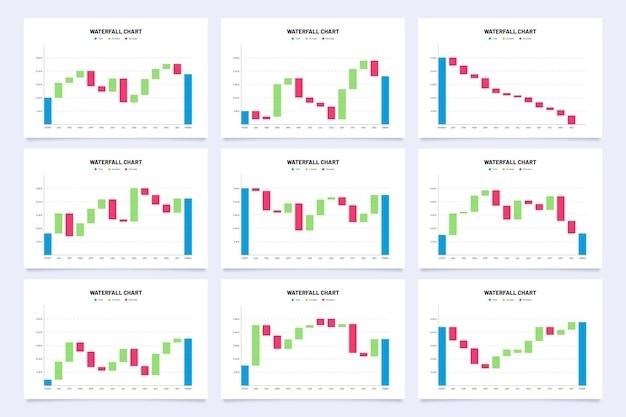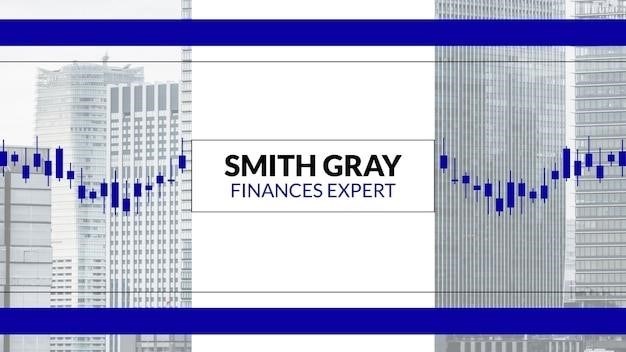Bullish Candlestick Patterns⁚ A Comprehensive Guide
This guide provides a comprehensive overview of bullish candlestick patterns‚ exploring their significance in technical analysis‚ their various types‚ and how to identify and utilize them effectively in trading. Discover the key characteristics of popular bullish patterns like the bullish engulfing‚ hammer‚ and morning star‚ and gain insights into their potential for predicting market reversals and identifying profitable trading opportunities.
Introduction
Candlestick patterns are a visual representation of price movements over a specific period‚ offering valuable insights into market sentiment and potential future trends. These patterns‚ characterized by their unique shapes and formations‚ can be categorized as bullish or bearish‚ signaling potential price reversals or continuations. Bullish candlestick patterns‚ in particular‚ are highly sought after by traders as they indicate a shift in market momentum from a downtrend to an uptrend‚ presenting potential opportunities for profitable trades. This guide delves into the world of bullish candlestick patterns‚ providing a comprehensive understanding of their significance‚ identification‚ and practical applications in trading.
What are Bullish Candlestick Patterns?
Bullish candlestick patterns are visual representations of price action on a chart that suggest a potential shift in market momentum from a downtrend to an uptrend. They are formed by the interplay of opening‚ closing‚ high‚ and low prices over a specific time period‚ usually a day or a specific timeframe. These patterns are characterized by distinct features that indicate a change in sentiment‚ with buyers gaining dominance over sellers. The appearance of a bullish candlestick pattern suggests that the price is likely to rise in the future. While not foolproof indicators‚ they provide valuable insights for traders seeking to identify potential buying opportunities.
The Importance of Bullish Candlestick Patterns
Bullish candlestick patterns hold significant importance in technical analysis as they provide valuable insights into potential market reversals. By understanding the underlying principles of these patterns‚ traders can gain a better understanding of market sentiment and make more informed decisions. These patterns serve as visual cues that highlight shifts in buying pressure‚ suggesting that the price is likely to rise. While not guarantees‚ bullish patterns can help traders identify potential entry points for long positions and capitalize on upward price movements. Furthermore‚ they contribute to a more comprehensive analysis by providing context and confirmation of potential trends‚ enhancing trading strategies and risk management.
Types of Bullish Candlestick Patterns
Bullish candlestick patterns can be broadly categorized into two main types⁚ reversal patterns and continuation patterns. Reversal patterns indicate a potential shift in trend‚ suggesting that a downtrend is likely to reverse into an uptrend. Continuation patterns‚ on the other hand‚ signal that the existing trend is likely to continue. These patterns provide valuable insights into market sentiment and can be used to identify potential trading opportunities. Understanding the nuances of each type allows traders to make more informed decisions and capitalize on market movements. By recognizing these patterns‚ traders can gain a better understanding of the underlying forces driving price action and develop more effective trading strategies.
Reversal Patterns
Bullish reversal patterns signal a potential change in market sentiment‚ indicating a shift from a downtrend to an uptrend. These patterns emerge after a period of price decline and suggest that buying pressure is starting to overcome selling pressure. They provide valuable insights into market psychology‚ offering traders an opportunity to identify potential turning points in the market and capitalize on the emerging bullish momentum. Recognizing and interpreting these patterns effectively can enhance trading strategies and increase the likelihood of profitable trades. Traders should be aware that confirmation of the reversal is crucial‚ as false signals can occur. Therefore‚ it’s essential to use reversal patterns in conjunction with other technical analysis tools to confirm the emerging trend and make informed trading decisions.
Continuation Patterns
Unlike reversal patterns‚ bullish continuation patterns suggest that the existing uptrend is likely to continue. These patterns confirm the prevailing bullish sentiment and indicate that buying pressure is still dominant. They provide traders with valuable signals to confirm the ongoing upward trend and identify potential entry points for long positions. Continuation patterns can be particularly useful for identifying trend extensions and capitalizing on the ongoing momentum of the market. They help traders align their trading strategies with the prevailing trend‚ minimizing the risk of entering trades against the dominant market force. As with all candlestick patterns‚ confirmation is crucial‚ and traders should use continuation patterns in conjunction with other technical analysis tools to confirm the ongoing trend and make informed trading decisions.
How to Identify Bullish Candlestick Patterns
Identifying bullish candlestick patterns requires careful observation and a systematic approach. Start by understanding the basic anatomy of a candlestick‚ including the body‚ upper shadow‚ and lower shadow. Familiarize yourself with the common bullish patterns and their distinctive characteristics. Pay close attention to the relationship between the candlestick pattern and the surrounding price action. For example‚ a bullish engulfing pattern is more significant when it appears after a downtrend‚ indicating a potential reversal. Additionally‚ consider the context of the pattern within the overall market trend. A bullish pattern might be less reliable if it occurs in a bearish market‚ and confirmation from other technical indicators is essential.
Using Bullish Candlestick Patterns in Trading
Bullish candlestick patterns can be valuable tools for traders seeking to capitalize on potential market reversals and upward price movements. However‚ it’s crucial to use them strategically and in conjunction with other technical analysis techniques. Traders often use bullish patterns as entry signals for long positions‚ aiming to profit from the anticipated price increase. When a bullish pattern appears‚ traders may consider entering a long position at the close of the candlestick or near the support level. Additionally‚ traders might combine bullish patterns with other indicators‚ such as moving averages or volume analysis‚ to confirm the strength of the signal. Remember that candlestick patterns are not foolproof indicators and can sometimes produce false signals. Therefore‚ it’s essential to manage risk effectively and implement appropriate stop-loss orders to limit potential losses.
Popular Bullish Candlestick Patterns
There are many different types of bullish candlestick patterns‚ each with its unique characteristics and implications. Some of the most popular and widely recognized bullish candlestick patterns include⁚
- Bullish Engulfing⁚ This pattern consists of two candles. The first candle is a bearish candle‚ and the second candle is a bullish candle that completely engulfs the body of the previous candle. This suggests that buyers have taken control of the market and are pushing prices higher.
- Hammer⁚ The hammer pattern is a single candlestick with a small body and a long lower shadow. It signifies a potential reversal from a downtrend‚ as buyers step in and push prices up after a decline.
- Morning Star⁚ This pattern consists of three candles. The first candle is a long bearish candle‚ followed by a small-bodied candle (usually a doji)‚ and then a bullish candle that closes above the midpoint of the first candle. It indicates a potential reversal from a downtrend‚ suggesting that buyers are gaining momentum.
These are just a few examples of popular bullish candlestick patterns. Understanding these patterns can help traders identify potential trading opportunities and make informed decisions.
Bullish Engulfing
The Bullish Engulfing pattern is a two-candlestick pattern that signals a potential reversal from a downtrend to an uptrend. It is characterized by a large bullish candle that completely engulfs the body of the previous bearish candle. The larger green candle‚ which “engulfs” the smaller red candle‚ indicates that buyers have taken control of the market and are pushing prices higher. The engulfing pattern suggests a shift in sentiment‚ with buyers overpowering sellers‚ leading to an increase in price.
To identify a Bullish Engulfing pattern‚ look for a smaller red candle followed by a larger green candle. The green candle should open below the red candle’s closing price and close above the red candle’s opening price. The larger the green candle compared to the red candle‚ the stronger the signal of a bullish reversal. Traders often use the Bullish Engulfing pattern in conjunction with other technical indicators to confirm a potential trend reversal and identify entry points for long trades.
Hammer
The Hammer candlestick pattern is a single-candle pattern that signals a potential bullish reversal. It is characterized by a small body‚ a long lower shadow‚ and a short upper shadow. The long lower shadow indicates that the price was under pressure from sellers‚ but buyers were able to push prices higher. The short upper shadow suggests that sellers were unable to push prices back down‚ indicating a potential change in momentum. The Hammer pattern is often seen at the bottom of a downtrend‚ signaling a potential reversal.
To identify a Hammer pattern‚ look for a candle with a small body‚ a long lower shadow at least twice the size of the body‚ and a short upper shadow. The Hammer pattern is considered a bullish reversal pattern when it appears after a period of declining prices. The longer the lower shadow‚ the stronger the signal of a potential bullish reversal. Traders often use the Hammer pattern to identify potential entry points for long trades. The Hammer pattern can be used in conjunction with other technical indicators to confirm a potential trend reversal.
Morning Star
The Morning Star is a three-candle pattern that signals a potential bullish reversal after a downtrend. It consists of a long bearish candle‚ followed by a small-bodied candle (either bullish or bearish)‚ and finally a bullish candle that closes above the midpoint of the first candle. The small-bodied candle represents a period of indecision in the market‚ while the bullish candle indicates that buyers have regained control. The Morning Star pattern is often seen at the bottom of a downtrend‚ signaling a potential change in momentum.
To identify a Morning Star pattern‚ look for a long bearish candle followed by a small-bodied candle and then a bullish candle. The bullish candle should close above the midpoint of the first bearish candle. The Morning Star pattern is considered a bullish reversal pattern when it appears after a period of declining prices. The longer the first bearish candle and the higher the close of the bullish candle‚ the stronger the signal of a potential bullish reversal. Traders often use the Morning Star pattern to identify potential entry points for long trades. The Morning Star pattern can be used in conjunction with other technical indicators to confirm a potential trend reversal.
Bullish candlestick patterns offer valuable insights into market sentiment and potential trend reversals. While they can be powerful tools for identifying potential trading opportunities‚ it’s crucial to remember that they are not foolproof indicators. They should be used in conjunction with other forms of technical analysis and fundamental analysis to confirm trading decisions. Furthermore‚ understanding the context of the pattern within the broader market trend is essential. By combining candlestick pattern analysis with other technical and fundamental tools‚ traders can increase their chances of making informed trading decisions and potentially capitalize on bullish market movements.

Resources for Further Learning
For those eager to delve deeper into the world of candlestick patterns‚ numerous resources are available to enhance your understanding and refine your trading strategies. Online platforms such as IG Academy offer comprehensive courses on candlesticks and technical analysis‚ providing a structured learning experience. Additionally‚ books like “Candlestick Charting Explained” by Greg Morris offer detailed explanations of various candlestick patterns and their practical applications. Furthermore‚ dedicated websites like MarketBulls provide an extensive overview of bullish‚ bearish‚ and neutral candle patterns‚ offering valuable insights and examples. By exploring these resources‚ you can expand your knowledge‚ refine your trading skills‚ and gain a deeper understanding of the nuances of candlestick pattern analysis.




Be the first to reply